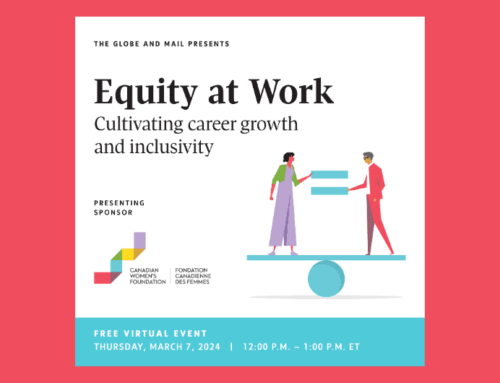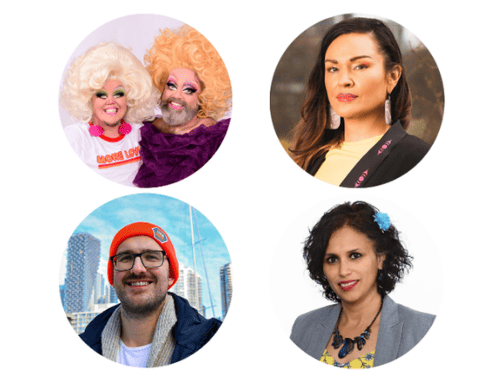On October 2017, the #MeToo Movement prompted new conversations about the pervasiveness of sexual assault and harassment. The hashtag, first conceived of by activist Tarana Burke in 2006, spread like wildfire across social media and encouraged many survivors to seek help.
Eight months later, sexual assault service providers are struggling to keep up with the demand that #MeToo and recent high-profile cases have prompted. Many survivors still have to wait several months to a year to access the services they need.
Here’s what Jackie Stevens, Executive Director of Avalon Sexual Assault Centre in Halifax, and Debra Tomlinson, CEO of the Association of Alberta Sexual Assault Services (AASAS), had to say about the #MeToo movement and how it’s affecting sexual assault services in Canada.
Have you seen the demand for services spike in the wake of #MeToo?
Both Stevens and Tomlinson have seen increased calls in the wake of #MeToo, and Stevens notes that such spikes have become increasing common when high-profile stories, such as the death of Rehteah Parsons, the Dalhousie Dentistry Facebook group, and the Jian Ghomeshi case, hit the headlines. At Avalon, requests for counselling have increased 54 per cent since last year. But since #MeToo began, she’s noticed a difference in the requests: “People are saying, ‘I want justice, I want repair, I want action taken around this, I want my voice heard.’”
Tomlinson says the AASAS, which has 12 sexual assault serving centres in its provincial network, has observed an increase in social media conversations and requests for services since it launched its first province-wide #IBelieveYou campaign in 2015. In March 2017, they had already seen a 53 per cent increase in new counselling intakes, and March 2018 brought another 25 per cent increase – a 78 per cent increase in just two years.
Why do you think the #MeToo movement has prompted more women to come forward and seek help?
“I think that until real-life examples showed up on social media, it’s like people didn’t believe it really was happening,” says Tomlinson. She says social media campaigns like #MeToo and #BeenRapedNeverReported help to confirm statistics that sexual assault service providers have known for years. On social media, survivors and supporters can be open, transparent, and “as opinionated as they want,” which encourages conversation.
Stevens adds that this “heightened awareness” has caused a shift in the community perspective – instead of disbelief and victim-blaming, now communities are recognizing a genuine problem, calling for action, and encouraging survivors to come forward.
Are there enough resources available to meet the increased demand?
Stevens and Tomlinson agree that, in the regions they serve, the resources available for survivors are far outstripped by demand. The waitlist for Avalon currently stands at over a year for clients accessing complex trauma therapeutic counselling, due to an increase in new requests for counselling. Reported wait times from the AASAS vary but are anywhere from four to nine months.
“If you look across our country, the disparity in the level of specialized services available is appalling,” says Tomlinson, citing a failure to understand that a diverse range of services are needed to prevent and address violence against women. Stevens also points out that a lack of resources makes it harder for workers to address clients with complex trauma like past sexual assault or childhood sexual abuse.
Communicating this need to policy makers, funders and government decision-makers is one of the biggest struggles that Tomlinson deals with. Both she and Stevens agree that sexual assault services are underfunded and often misunderstood.
How does this lack of resources impact women who are seeking help?
Tomlinson notes that when survivors are being believed, validated, and encouraged to seek help by social movements like #MeToo, being told they have to wait for services is “extremely disappointing and deflating,” especially considering that there might not be anywhere else to go, or that other options might be too expensive.
“Sometimes people might be fine with waiting,” says Stevens. “But in some of these situations, like #MeToo, there’s heighted awareness within a community, and people are getting triggered while they’re waiting.” She also notes that a lack of resources impacts Avalon’s ability to provide effective support if, for example, a client needs a translator or needs specialized services because they have been a victim of trafficking. Both Tomlinson and Stevens agree that a lack of timely, appropriate services hinders women’s and other survivors recoveries, short-term and long-term.
Do you think that #MeToo will bring lasting change to the way that we view sexual assault and the importance of sexual assault services?
“I do think we are on the precipice, maybe in the middle of a really big change, and I’m thrilled and excited,” says Tomlinson. Stevens and Tomlinson agree that #MeToo has forced people to pay attention to the repercussions of sexual assault and harassment. “There’s more accountability, and that’s showing a shift in what is needed for change or added support in the legal system for victims,” adds Stevens.
The #MeToo Movement has also had a tremendous impact on society. This year, May was proclaimed Sexual Violence Awareness Month in Alberta. The AASAS also conducted a survey that found that in 2017, 75 per cent of Albertans said they would give a positive response to a disclosure of sexual assault (up from 21 per cent two years ago, before #MeToo and their #IBelieveYou campaign).
What do we need to do in order to keep the #MeToo momentum going forward?
Stevens wants to keep the conversation going and make sure intersectional and marginalized voices are being heard. “I think we have to keep shifting and expanding how we’re looking at the issues of sexualized violence. There’s still people being left out of it,” she says.
Tomlinson suggests using social media and building partnerships with traditional media to tell more stories and raise awareness. She also calls for continued pressure on policy-makers, decision-makers and government leaders. “We need to … make sure this issue stays on the social policy agenda.”
To learn more about the #MeToo movement, read our fact sheet. To get involved and to donate, visit aftermetoo.com.
Learn More:
- After Unfounded, award-winning journalist Robyn Doolittle delves into #MeToo
- Dating a Survivor of Sexual Violence: How to Support Your Partner
- Confronting Sexual Harassment in the Canadian Film Industry with TIFF
Take Action:
- Sign up for our e-newsletter to have our latest stories and resources sent to your inbox.
- Follow us on Facebook and Twitter to join a national conversation about gender equality.







[…] Q&A: Support Needs Spike After #MeToo […]
[…] Q&A: Support Needs Spike After #MeToo […]